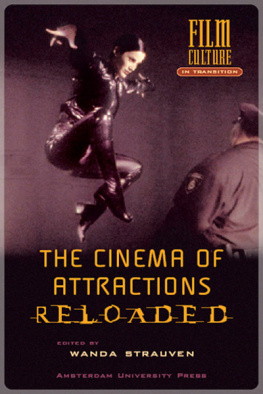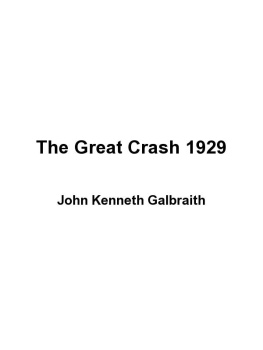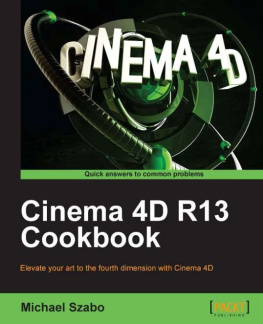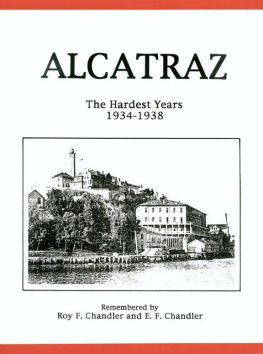Lou Sabini - Sex In the Cinema: The ‘Pre-Code’ Years (1929-1934)
Here you can read online Lou Sabini - Sex In the Cinema: The ‘Pre-Code’ Years (1929-1934) full text of the book (entire story) in english for free. Download pdf and epub, get meaning, cover and reviews about this ebook. year: 2017, publisher: BearManor Media, genre: Non-fiction. Description of the work, (preface) as well as reviews are available. Best literature library LitArk.com created for fans of good reading and offers a wide selection of genres:
Romance novel
Science fiction
Adventure
Detective
Science
History
Home and family
Prose
Art
Politics
Computer
Non-fiction
Religion
Business
Children
Humor
Choose a favorite category and find really read worthwhile books. Enjoy immersion in the world of imagination, feel the emotions of the characters or learn something new for yourself, make an fascinating discovery.

- Book:Sex In the Cinema: The ‘Pre-Code’ Years (1929-1934)
- Author:
- Publisher:BearManor Media
- Genre:
- Year:2017
- Rating:3 / 5
- Favourites:Add to favourites
- Your mark:
- 60
- 1
- 2
- 3
- 4
- 5
Sex In the Cinema: The ‘Pre-Code’ Years (1929-1934): summary, description and annotation
We offer to read an annotation, description, summary or preface (depends on what the author of the book "Sex In the Cinema: The ‘Pre-Code’ Years (1929-1934)" wrote himself). If you haven't found the necessary information about the book — write in the comments, we will try to find it.
Lou Sabini: author's other books
Who wrote Sex In the Cinema: The ‘Pre-Code’ Years (1929-1934)? Find out the surname, the name of the author of the book and a list of all author's works by series.
Sex In the Cinema: The ‘Pre-Code’ Years (1929-1934) — read online for free the complete book (whole text) full work
Below is the text of the book, divided by pages. System saving the place of the last page read, allows you to conveniently read the book "Sex In the Cinema: The ‘Pre-Code’ Years (1929-1934)" online for free, without having to search again every time where you left off. Put a bookmark, and you can go to the page where you finished reading at any time.
Font size:
Interval:
Bookmark:
Classic Cinema.
Timeless TV.
Retro Radio.
BearManor Media

See our complete catalog at www.bearmanormedia.com
Sex In the Cinema: The Pre-Code Years (1929-1934) 2017 Lou Sabini. All Rights Reserved.
No part of this book may be reproduced in any form or by any means, electronic, mechanical, digital, photocopying or recording, except for the inclusion in a review, without permission in writing from the publisher.
This version of the book may be slightly abridged from the print version.

Published in the USA by: BearManor Media
PO Box 71426
Albany, Georgia 31708
www.bearmanormedia.com
ISBN 978-1-62933-106-5
Cover Design by John Teehan.
eBook construction by
Table of Contents
Dedicated to
Susan K. Sabini
The one person who sat with me and viewed all of these films, providing me with insight and her own knowledge of movie history.
A loving wife and mother
There are countless individuals and organizations I would like to thank for making this book a reality. Through social media, I have become acquainted with so many talented people who have helped me with their postings on Facebook, not to mention my own classic film page called MY REEL LIFE. Thanking all the members (as of this writing, there are over 1,000) would be ludicrous, so for starters, I will give honorable mention to my new friends, who have posted some vital facts that have been incorporated into this book, namely Richard Adkins, one of my oldest pals, Richard W. Bann, Marie Behar, Ralph Celentano, Andy Dzamba, Hal Erickson, Karen Latham Everson, who is always there to lend an ear (or suggestion), Robert Fells, the late Leatrice Gilbert Fountain, John Giriat, Eric Grayson, David Lord Heath, Jeff Heise, Ron Hutchinson of the Vitaphone Project, Bill Knotts, Rick Lertzman, Annette DAgostino Lloyd, Don J. Long, Scott and Jan MacGillivray, Steve Massa, Robert McKay, Gary McNerney, Gerry Orlando, Jenny Paxon of the Library of Congress, Nick Santa Maria, Rick Scheckman, Randy Skretvedt, my good pal, Stan Taffel, Frank Thompson, Mark Alan Viera, Melanie Wyler and Jordan Young.
Also, for making suggestions and helping me through this undertaking, I would like to thank my good friend, Bill Levy, who I met when I wrote Behind the Scenes of They Were Expendable. Also, to my very good pal of over forty years, Daniel S. Burke, who kick-started MY REEL LIFE on Facebook, which has grown in leaps and bounds since its inception in 2012. To my mentor, the late William K. Everson, a man who gave my life a definite direction and introduced me to the wonderful world of the Pre-Code era back in the early eighties, when he showed my wife, Sue and I, his prints of Baby Face and Three on a Match. After this initial experience, we couldnt get enough and Bill kept loaning us more and more 16mm prints from his vast archive. Also, I would like to thank Robert M. (Mike) Cline, who provided me with so many great prints back in the day along with John McElwee, who was always there when I needed help (he even helped me acquire prints of Hard to Handle and Platinum Blonde ). My sincerest gratitude to my oldest (and dearest) friend, Jack Roth, who provided me with a rare 16mm print of By Candlelight.
Special thanks to my publisher, Ben Ohmart, who believed in this undertaking and one of my dearest friends, the late Carol Rugh, always there to give me assurance when after 35 years in sales, she convinced me to pursue my dream of becoming a writer of the history of motion pictures. To Aureo Brandao, who helped me to acquire some rare photographs (which are identified with AB following each caption) for this volume and to Richard Finegan, a man who is a wealth of information when it comes to classic cinema, who provided me with the bulk of the rare stills seen in this book from his vast collection (identified with RF following the caption). No words can express my sincere thanks for sharing these cinematic treasures. I am deeply indebted to Kim Krause, who went over the entire manuscript making various corrections and additions. Words cannot describe my deep appreciation. Also, I would like to thank film historian/author/scholar Richard Barrios for writing the foreword. I met Richard about ten years ago at Cinefest, a film festival for classic film buffs, which was held annually in Syracuse, New York. Richard was doing a presentation of vintage movie musicals, based on his superb book, Song in the Dark. I cant tell you how impressed I was with Richards knowledge and I am honored to have him as my friend.
Lastly, I would like to thank the woman who has lived through all of lifes happy times with me (and the darker ones, too), my wife of over forty-one years, Sue. Ever since we started dating in 1973, she has watched virtually thousands of movies with me, providing some excellent commentary and being not only the perfect wife, but a lady who has inspired me and made watching these movies an incredibly captivating experience.
Lou Sabini June 2016
It has been some years now, perhaps forty, that a seemingly odd hyphenated term Pre-Code has come to have a most particular connotation. As readers of this book may already know, the term refers most commonly to a very exact time in the history of a quite specific art form: American film. Beginning (most commonly) with 1930 and ending in 1934, both the United States and its motion pictures were subjected to a profound amount of stress on a bewildering number of levels. Much of this, of course, came from the onset of the Great Depression, for it was not long after the stock market crash that despair and deprivation came to be ever-present watchwords. By the dawn of 1932, all the hard realities had become clear: this was not a brief or ephemeral phenomenon, millions of people were suffering, and the country was in trouble. Not even the film industry, oblivious and privileged as it could sometimes be, was immune. Studios tottered on the brink of receivership and bankruptcy, attendance and grosses plummeted, budgets and salaries and employee rolls were all slashed.
There was, however, no way that the American film industry would go the way of the countrys banks and simply shut down. If fewer people could afford to attend the movies, there were still many millions who continued to go, and in such a difficult time they had some very particular needs and tastes. Thus it was that mainstream American film of the early 1930s offered a remarkable type of entertainment: still escapist, naturally, still a diversion but with a newly-acquired hard edge. Essentially, the films catered to their audiences need to have their entertainment contain some sort of link with or reflection of the outside world. As a result, movies became more frank, in many ways, than they had ever been. A few key films were actually about the Depression and its effect; others were about other current harsh realities, most conspicuously crime and sex. All of it still had something of a patina, with stars and production trappings still in evidence, yet it gave Depression-numbed spectators the impression that detectable aspects of their own lives were being portrayed up on that big screen. A brutal gangster film such as The Public Enemy could be simultaneously an entertainment (no real-life hood had Jimmy Cagneys charisma), an indictment (these guys were, after all, scum), and a recollection of some real life incidents (just about everyone knew about the mob rule in cities such as Chicago). Similarly, a fallen-woman tale on the order of Faithless or Safe in Hell could be both titillation and sermon; yes, it was enjoyable, in a voyeuristic way, to see these gorgeous stars wallowing in the gutter, but their circumstances often occurred as a result of poverty and need. Those, rest assured, were things unfamiliar to virtually nobody.
Font size:
Interval:
Bookmark:
Similar books «Sex In the Cinema: The ‘Pre-Code’ Years (1929-1934)»
Look at similar books to Sex In the Cinema: The ‘Pre-Code’ Years (1929-1934). We have selected literature similar in name and meaning in the hope of providing readers with more options to find new, interesting, not yet read works.
Discussion, reviews of the book Sex In the Cinema: The ‘Pre-Code’ Years (1929-1934) and just readers' own opinions. Leave your comments, write what you think about the work, its meaning or the main characters. Specify what exactly you liked and what you didn't like, and why you think so.





